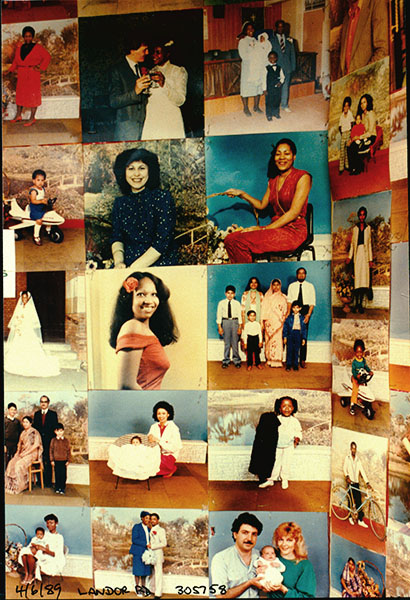Rather fewer photographers now have shops with windows to display examples of their work, and of course it was only those who made a living from social photography – weddings, portraits etc – who sold their services to the general public for whom it made sense. Now, most people take their own portraits, apart from those usually hideous examples produced by school photographers which parents are blackmailed into accepting so that schools can have a photographic record of their pupils (or rather ‘students’ now that you graduate even from nursery schools.)
Of course there are parents who like them, but when I was a teacher I was opposed to them on principle; not just because they generally had the same degree of originality as a photobooth, but because I knew that they put parents on low incomes into the position of having to either pay for them and go without necessary food or clothing or disappoint their child and force them to take the pictures back to hand in at school.
But good social portraiture is a rare skill, and during the late 1980s and early 1980s I carried out a project that involved photographing in and through many shop windows across London, and this included many photographer’s windows. I photographed a detail on one in Landor Rd in 1989 which I think must have been Harry Jacobs studio window; the caption states 4/6/89 Landor Rd 305758, where the 6 figure number is a Grid reference, though these were not always correct to the last figure. The image is a scan from a commercial enprint, which I could locate quickly as these are filed by the 1km grid square in which they were taken.

I’m sorry that I don’t appear to have taken a wider view of the shop front, but this picture is unusual for me and I think means that I realised the value of his work. As with many of the pictures in this series it was taken on a Sunday morning, when most shops were closed as this usually enabled me to work undisturbed. I do remember thinking that it would be worth going back and finding out more about what appeared to be a remarkable social record, but I never got around to doing so. And perhaps a little over ten years later I noticed the shop no was no longer there.
Soemone from the Photographers’ Gallery had clearly also noticed the work, and three years after Jacobs retired in 1999, with an archive of almost 60,000 photographs they put on a show based around his work in 2002, discussed in The Guardian. His son wrote a short piece, My Father the photographer which was published in The Evening Standard.
The Photographers’ Gallery apparently decided at the time that for photographs taken before the 1988 Copyright Act they had to get permission from the subjects to exhibit them. I’m not sure that was true, but although we have had no such problems from then until now, it is possible that things may be different again under the EU General Data Protection Regulation (GDPR). But you can rest assured that the GDPR allows processing for the purposes of journalism, and I think for art. The problem with the work by Jacobs was that it had been taken as a commercial agreement between the sitter and photographer and the sitter’s permission was probably required for it to be shown as art or documentary. My photograph above is clearly a work of art!
The Freelance Branch of the NUJ (a union to which all journalists in the UK should belong) has published an excellent guide to the GDPR for Freelances, which is generally reassuring, though it does point out we should all have registered as data controllers under the Data Protection Act 1998 and should continue to pay the £40 per year this involves.
You are also required to take proper steps to protect your data, which would include using strong passwords or physical locks on devices including computers, backup disks and memory sticks etc. The article makes clear that as journalists you can use the exemptions for free expression to avoid giving any information in response to ‘subject access requests‘ and that journalism is explicitly exempted from the ‘right to be forgotten‘. Something which may upset some is that the advice suggests that there may be problems under GDPR in using cloud storage.
Back to Harry Jacobs. My reason for mentioning him is that Lambeth Council are for once doing something I approve of, with a show of his work in the Town Hall. A Snapshot of Brixton: Harry Jacobs and the Empire Windrush opened on Friday 25th May and runs until Friday 6th July. Open M – F, 09.00 – 20.00